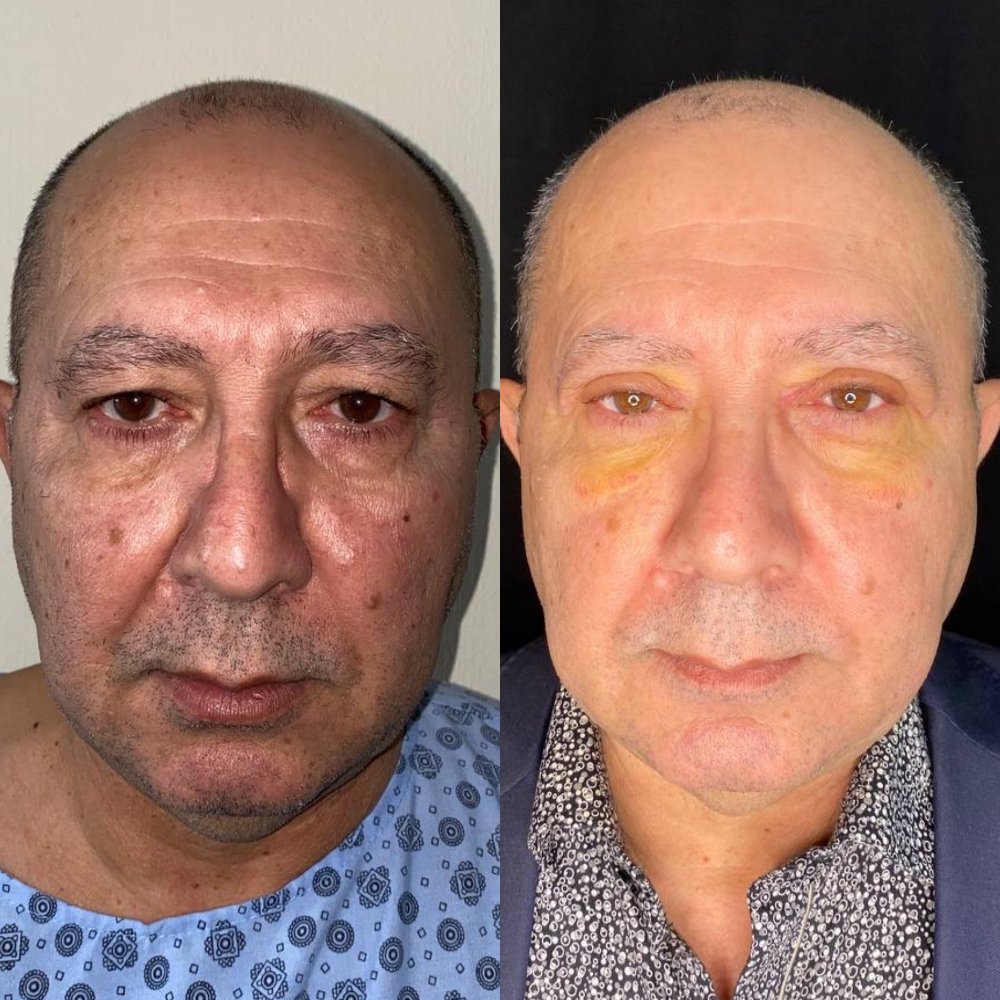Contents
- Waist Slimming Surgery Without Rib Removal In Baku
- Scars After a Deep Plane Facelift, Why They Heal So Well
- Facelift Alternatives – Morpheus8 & Non-Invasive Treatments
- Kesselring Lip Surgery – What You Need to Know
- Advanced Deep Plane Facelift with Preservation Technique™
- Azerbaijani Aesthetic Surgery Goes Global: Dr. Mubariz Mammadli’s Presentation at the International Congress
- Azerbaijani Aesthetic Surgeon Mubariz Mammadli Achieves International Success
- Why Is the Platysma So Important?
- indeed, every plastic surgeon has likely encountered a statement like, “You didn’t pull my face tight enough.” This is often due to patients misunderstanding how anatomy, tissue dynamics, and healing processes work.
Blepharoplasty
What is Blepharoplasty (Eyelid lift surgery)?
Blepharoplasty is a type of surgery that removes excess skin from the eyelids. For many, this is the only way to get rid of eyelid tears and swelling. In this article, I will give you brief and useful information about blepharoplasty in simple language.When can blepharoplasty be done?
Eyes tell real age. Getting older, excess skin and fat can gather above and below your eyelids. Therefore, surgical correction allows to significantly improve the appearance.This procedure is mainly required in middle-aged patients. Wrinkles and bags under the eyes that make a person look older are the first signs of age changes. Sometimes this procedure is required at a younger age, when there is an anatomical tendency to develop sagging and hernias.
Why it is done?
• Bags under the eyes;• Fine and deep wrinkles;
• Tired look;
• Excess skin on the lower eyelids;
• Desire to correct eyelid defects;
• Desire to change eye shape or shape;
• The descent of the corners of the eyes.
It's also an effective way to improve sight in older people whose sagging upper eyelids get in the way of their vision.
There are many things to consider when deciding to undergo blepharoplasty surgery. The later you go for correction, the more noticeable the scars will be.
If the skin is elastic despite the fat tears, the operation does not leave any scars. The specialist determines how many times the possibility of performing blepharoplasty can be done. But it is important to remember that the period between operations should not be less than 7 years.
Correction methods
Eyelid lift surgery can be done through plastic surgery or non-surgically. The correction method is selected individually for each case, depending on the health condition of the skin around the eyes and the body, and the price varies accordingly.Eyelid blepharoplasty without plastic surgery is considered painless and non-traumatic. In addition, its contraindications and possible complications are few.
There are two methods:
1. By injection (needle). Medicinal preparations are injected under the skin, which makes it smoother and more elastic.2. With the device. Laser, ultrasound, thermal, thermolifting, electro, Raylife and DROT-therapy apply.
Contraindications non-surgical eyelid lift
• pregnancy;
• malignant derivatives;
• if you have a pacemaker;
• infectious and autoimmune diseases;
• hemophilia;
• inflammatory skin diseases around the eyes;
• diabetes.
No scars remain after non-surgical lower and upper eyelid blepharoplasty. The effect lasts from 1 year (needle) to 7 years (laser procedures).
I should note that the non-surgical method removes only minor defects: shallow wrinkles, small fat deposits. If the problem is more serious or the patient is over 50 years old, it is advisable to turn to plastic surgery.
Plastic surgery. Excess fat and skin are removed surgically. The incisions are made in the natural folds so that the scars are not visible. Removal of tears in the area of the lower eyelid is possible without an incision through the mucous membrane of the eye.
Contraindications non-surgical eyelid lift
• blood clotting problems;
• taking anticoagulants;
• previous heart attack or stroke;
• retinal detachment;
• heart problems;
• diabetes;
• oncological tumors;
• AIDS;
• systemic diseases;
• chronic kidney or liver failure;
• menstruation;
• pregnancy and lactation period.
Non-specific factors that make the operation impossible
• inflammatory processes around the eyelid skin;
• bazedova disease;
• dry eye syndrome;
• deep scars beside the temple;
• myopia;
• conjunctivitis;
• blepharospasm, or glaucoma.
Post-operative recovery period
After the operation, the plastic surgeon sets a certain recovery period. Swelling is observed in the first days after the operation: this is a natural reaction of the body. Swelling can be reduced by applying a cold compress.Such patients should follow certain rules for quick rehabilitation after blepharoplasty:
• avoid stress on the eyes and eyelids (reading, computer, TV, contact lenses, bright light);
• give up smoking and alcohol (to get rid of large swellings), salty foods;
• sleep only on the back using a high pillow;
• replace contact lenses with glasses for one month;
• trying not to bend the head;
• eyelids and eyes from external influences (wind, bright light, cosmetics, soap);
• wash the face with chamomile tea;
• avoiding baths and saunas;
• to neatly perform special tasks for the eye.
• Do not bend over or do any strenuous activities, such as biking, jogging, weight lifting, or aerobic exercise, for 2 weeks or until your doctor says it is okay.
• Do not wear eye makeup for 2 weeks. You may also want to avoid face cream or lotion.
• Ask your doctor when it is okay to drive.
The rehabilitation period determined by the plastic surgeon takes about 7-10 days. You can go to work after 2 weeks. The result is known immediately after the operation. The full effect will be visible after a month. Following the rules of eyelid skin care allows you to keep it longer. Sometimes this period is more than ten years.

